Jul 2, 2015
கலப்பட உணவுப் பொருட்கள்... கண்டுபிடியுங்கள் இப்படி!
 ‘‘நம் கிச்சனில் இருக்கும் மளிகைப் பொருட்களில், 50 சதவிகிதத்துக்கும் மேல் கலப்படம் சேர்ந்த பொருட்களே! கலப்படத்தை எப்படிக் கண்டறிவது என்று தெரியாததால், அந்தப் பொருட்களைப் பயன்படுத்தப் பழகிவிட்டோம். ஆனால், மளிகைப் பொருட்களின் கலப்படத்தை சில எளிய வழிகள் மூலம் அறியலாம்!’’ என்று வழிகாட்டுகிறார், இந்திய நுகர்வோர் சங்கத்தின் துணை இருக்குநர் எம்.ஆர்.கிருஷ்ணன்.
‘‘நம் கிச்சனில் இருக்கும் மளிகைப் பொருட்களில், 50 சதவிகிதத்துக்கும் மேல் கலப்படம் சேர்ந்த பொருட்களே! கலப்படத்தை எப்படிக் கண்டறிவது என்று தெரியாததால், அந்தப் பொருட்களைப் பயன்படுத்தப் பழகிவிட்டோம். ஆனால், மளிகைப் பொருட்களின் கலப்படத்தை சில எளிய வழிகள் மூலம் அறியலாம்!’’ என்று வழிகாட்டுகிறார், இந்திய நுகர்வோர் சங்கத்தின் துணை இருக்குநர் எம்.ஆர்.கிருஷ்ணன்.
மளிகைப் பொருட்களின் கலப்பட சோதனைக்காக கிருஷ்ணன் குறிப்பிட்ட வழிமுறைகள்... இதோ!
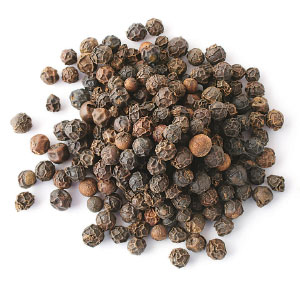
மிளகு
கலப்படம்: மிளகில் எடை அதிகரிப்புக்காக பப்பாளி விதை சேர்க்கப்படுகிறது. பழைய ஸ்டாக் மிளகைப் பளபளப்பாக்கி ஃப்ரெஷ் ஷாகக் காட்ட, இப்போது மினரல் ஆயிலும் கலக்கப்படு கிறது.
கண்டறிதல்: டிஷ்யூ பேப் பரில் மிளகை வைத்தால், பேப்பரில் எண்ணெய் ஒட் டும். தண்ணீரில் மிளகைப் போட்டால் எண்ணெய் மிதக்கும். மிளகில் உள்ள எண்ணெய் வாசனையை வைத்தும், கலப்படத்தைக் கண்டுபிடிக்கலாம்.
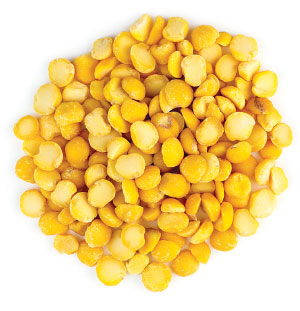
பருப்பு வகைகள்
கலப்படம்: பாலிஷ் செய்யப் பட்ட பருப்பு வகைகளில் பெரும்பாலும் மெட்டானில் யெல்லோ கலர் (metanil yellow colour) கலக்கப்படுகிறது. நிறம் மங்கிய பருப்புகளை ஃப்ரெஷ்ஷாகக் காட்டவும்... பருப்பை பாலிஷிங் செய்யும்போது பருப்பில் இழந்த மஞ்சள் நிறத்தை மீண்டும் ஏற்றவும் இது கலக்கப்படுகிறது.
கண்டறிதல்: டைல்யூட் ஹைட்ரோகுளோரிக் ஆசிட்டை (dilute hydrochloric acid) டெஸ்ட் டியூப்பில் எடுத்துக்கொண்டு சிலதுளிகள் விட்டுப்பார்த்தாலே பருப்பில் ஏற்றப்பட்டிருக்கும் கலர் பிரிந்து கசடுபோல் கீழே தங்கிவிடும்.

ஜவ்வரிசி
கலப்படம்: ஆப்டிக்கல் வொயிட்னர் கெமிக்கலை (டினோபால் என்கிற பெயரில் இந்த ரசாயனம் விற்க்கப்படுகிறது.) ஜவ்வரிசி யுடன் கலக்கும்போது பளிச் என மாறும்.
கண்டறிதல்: இதை சோதனைச்சாலையில் ஆய்வு செய்து கண்டறியமுடியும்.
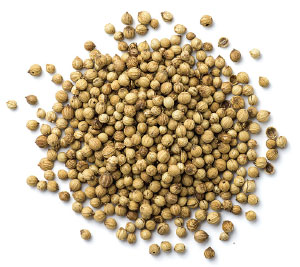
தனியா (கொத்தமல்லி)
கலப்படம்: பளபளப்புக்காக தனியாவில், சல்ஃபர் டை ஆக்சைடு (sulphur dioxide) பயன்படுத்தப்படுகிறது.
கண்டறிதல்: வெண்மையாக இருந்தால் அது கலப்பட தனியா. கறுப்பு தனியாதான் எப்போதும் சிறந்தது.
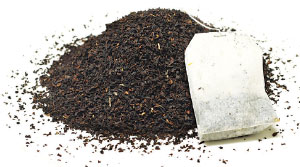
டீ பவுடர்
கலப்படம்: டீ வைத்த பிறகு ஃபில்டரில் இருந்து மீதமாகும் கசடுகளை 20, 30 கிலோ வரை சேகரித்து வைத்திருந்து அதை உலர்த்தி, அதில் சிறிதளவு நல்ல டீ தூளினை சேர்த்து, டார்டாரின் (tartarin) என்கிற கெமிக்கலையும் கலந்து இறுதியில் பாக்கெட் செய்து விற்கப்படுகிறது.
கண்டறிதல்: வெள்ளை பேப்பரில் சிறிது டீத்தூளை வைத்து தண்ணீரை விட்டால், பேப்பர் நிறம் மாறும். பொதுவாக சுடுநீரில்தான் டீத்தூளின் நிறம் மாறும். குளிர் நீரிலேயே நிறம் மாறி னால், உஷார்.
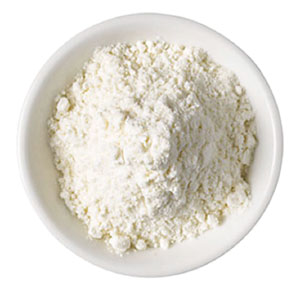
மைதா மாவு
கலப்படம்: மைதா மாவில் அதிகளவில் கலக்கப்படுவது, மரவள்ளிக்கிழங்குத்தூள். இது அதிக வெளிர் நிறத்தை மாவுக்குக் கொடுக்கும்.
கண்டறிதல்: மைதா மாவில் இழுவைக்கான எலாஸ்டிக் தன்மை இருக்கும். இதுவே கலப்பட மைதாவாக இருந்தால், உதிரி உதிரியாக இருப்பதுடன் இழுவைத் தன்மையின்றி இருக்கும்.
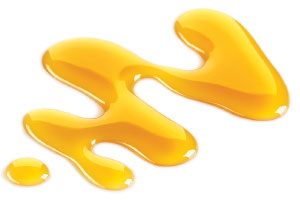
இவை தவிர, எண்ணெ யின் கலப்படத்தை லேப்களில் மட்டுமே கண்டறிய முடியும் என்பது குறிப்பிடத் தக்கது. கல் உப்பை பயன் படுத்தும்போது, அதை டம்ளர் தண்ணீரில் போட, கசடுகள் அடியில் தேங்கும். மேலே இருக்கும் தெளிந்த நீரை, உப்பு தேவைக்குப் பயன்படுத்தலாம்!’’ என்று விரிவாக பேசியவர்,
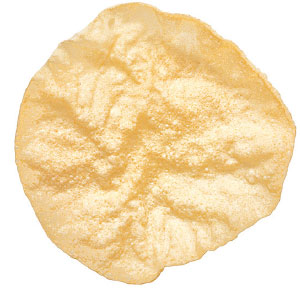
‘‘அந்தக் காலத்தில் வீட்டிலேயே போடப்படும் அப்பளம் மற்றும் வடாம் போன்றவை வெள்ளை நிறத்திலேயே இருக்கும். அதில் எந்தவிதமான கலர்களும் கலக்காமல் உணவுப்பொருளாக மட்டுமே உடலுக்கு நன்மை பயத்தன. ஆனால், இன்று எல்லா உணவுப்பொருட்களிலுமே கலர்களைப் பயன்படுத்து கிறார்கள். அப்பளங்களே பலவண்ணங்களில் வருகின் றன. இப்படிப்பட்ட கலர்கள் அனைத்துமே உடலுக்கு ஆபத்தை விளைவிக்க கூடியவைதான். இவற்றை தவிர்த்தலே நலமான வாழ்வுக்கு வழிவகுக்கும். கிச்சனை மாடுலர் கிச்சனாக மாற்றுவதைவிட, கலப்படமற்ற கிச்சனாக வைத்திருப்பது முக்கியம். அதுதான் ஆரோக் கியத்துக்கு அரண்!’’
- அழுத்தமாகச் சொல்லி முடித்தார் கிருஷ்ணன்.
Good news for Maggi Lovers: Maggi is likely to return to market soon, here's how?
New Delhi, July 2: Maggi lovers across the country will be happy to know that their favourite noodle may return to Indian market.
Within a month after a ban on Maggi, Nestle India may return to shelves with full marks. After facing ban, Nestle India recently recalled Maggi from the Indian market and destroyed the instant noodles worth Rs 320 crore.
The company faced criticism as food safety regulator FSSAI banned Maggi for presence of lead beyond permissible limits and taste enhancer monosodium glutamate.
Days after recalling the instant noodles from market in India, Nestle finally can heave a sigh of relief. UK's food regulator Food Standards Agency (FSA) on Wednesday, July 1 gave a clean chit to Nestle for Maggi manufactured in India.
UK's FSA claimed that levels of lead in the product are well within the EU permissible levels. In an official statement, UK's FSA said, "The FSA can confirm that results from testing samples of Maggi Noodles in the UK have all found that levels of lead in the product is well within EU permissible levels and would not be a concern to consumers."
"Following an incident in India, where a sample of Maggi Noodles was reported to contain high levels of lead, the Food Standards Agency made the decision to test a selection of Maggi Noodles as a precaution. In India, this incident has resulted in a large scale withdrawal of the product," the agency added in its statement.
Nestle informed FSA that the only variety of Maggi Noodles they import into the UK from India is the ‘masala flavour'.
"The FSA has now tested this flavour and others from the Maggi noodles range, as a precaution. As well as tests carried out by local authorities, the FSA has also asked Nestle to provide it with test results from its own samples. All showed levels of lead to be well within EU permissible levels," it said.
The total number of samples taken from Nestle, local authorities and port authorities were around 900 in total, FSA added.
Similarly, food regulators of other countries such the Vietnam Food Administration (VFA), National Measurement Institute in Australia and Singapore's Agri-Food and Veterinary Authority (AVA) have given clean chit to the company and said Maggi noodles imported from India are "completely safe to eat."
Nestle India currently exports Maggi noodles to Canada, UK, Singapore and Kenya and to third parties in the US, Australia and New Zealand.
Poisonous food

All substances are poisons; there is none which is not a poison. The right dose differentiates a poison and a remedy - Paracelsus (1493-1541)
The rapid development of food technology and food-processing industries has raised the risk of contamination by additives. Ironically enough, the Green Revolution has spawned other sources of food contamination, through pesticides and agro-chemicals. Moreover, unscrupulous traders adulterate food to increase the margin of profit. Freshwater fish contains mercury from industrial effluents; poultry chicken and eggs are contaminated with hormones that can lead to prostate cancer. Every bite of food is contaminated with pesticides. Indeed, we eat at our peril.
Natural poisons can have a chronic pharmacological effect. However, many of these toxic elements can act as a protection against animals feeding on them. At least 5,000 species of marine fish are known to be contaminated. Moreover, there are natural contaminants of food as for example bacteria, fungi and other toxins.
The use of pesticides in India began in 1948 with small-scale import of DDT (for malaria control) and BHC (for locust control). They have been used in agriculture since 1949. The country uses around 30,000 tons of pesticides annually, more than 70 per cent of which consists of “organochlorine compounds”. Of the pesticides used, only 0.1 per cent hit the targeted pests and the rest pollute the soil, waterbodies and finally enter our food chain. Around 20 per cent of food products contain pesticide residues beyond the Maximum Residue Level (MRL) - the maximum concentration of a pesticide expressed in part per million (PPM) that is legally permitted in a food commodity - compared to only 2 per cent globally. While the regulating agency that is tasked to enforce MRLs does not monitor residues, the agency that is supposed to check contamination cannot regulate the presence of pesticides in food. It is a classic case of non-accountability.
The Indian Council of Medical Research found DDT in 82 per cent of the 2205 milk samples collected randomly from 12 states. Under the central scheme, ‘Monitoring of Pesticide Residues at National Level’, as many as 16,790 samples, collected from various wholesale and retail markets, had been analysed in 25 laboratories. Around 509 samples of vegetables, spices, rice, wheat, pulses and other food items were found to contain pesticide residues beyond the MRL. Almost all vegetables samples showed high MRL throughout the year, especially so in the rainy season. Among the vegetables, capsicum, green chilli and cauliflower had higher level of MRLs, while cabbage, brinjal, tomato, okra, bitter gourd, cucumber, green peas and coriander leaves had pesticide residues but not as high. Among fruits, grapes had the highest levels of pesticide residues. Though samples of milk, meat and surface water did not contain pesticides above the MRLs, six out of 776 fish samples were found to have pesticides above the stipulated level. Almost all foods items of our daily consumption are contaminated with pesticide residues.
The use of antibiotics in farms has contributed to the emergence and spread of resistant bacteria. To rear broiler chicken, antibiotics are fed throughout their lifecycle of 35-42 days. Regular exposure to sub-therapeutic doses of antibiotics promotes the development of resistant bacteria in the gut. The resistant bacteria can be transmuted to those who eat chicken through the phenomenon known as “horizontal transfer”. Around 75 per cent of antibiotics used are not absorbed by animals and excreted in their wastes, posing a serious risk to public health. Both resistant bacteria and antibiotic residues also enter the food-chain through the soil and water. Even vegetarians can be affected from farm bacteria that is transferred to those who do not eat chicken or are vegetarians.
Food safety is also threatened by numerous contaminants that emanate from industrial pollution. The Deadly Trio - mercury (Hg), cadmium (Cd_ and lead (Pb) - and the polychlorinated biphenyls (PCBs) have been potential hazards. Food toxicity is caused by industrial pollutants. Lead is also a cumulative poison and once it is absorbed, it tends to accumulate in the body.
Food additives - preservatives, colouring agents, flavour enhancers, sweetening agents, emulsifiers, antioxidants etc - are now integral to processed food. These exogenous substances, of both natural and artificial origin, are intentionally added to make food attractive to consumers by enhancing both organoleptic (sensory) and non-organoleptic (non-sensory) characteristics.
In strictly legal terms, food additives that do not conform to standards are not permitted. The names of approved food additives and their technical purposes have been mentioned in the Food Safety and Standards (Food Products Standards and Food Additives) Regulations, 2011. Certain additives have been linked to cancer, digestive problems, heart diseases, allergies, even obesity. Even natural additives may be harmful for certain individuals. Accepted Daily Intake (ADI) is a measure of the amount of an additive in food that can be ingested - daily, over a lifetime - without any health risk.
Processed food is not wholesome and ought not to be consumed by children; experts have now established a link between processed food and childhood hyperactivity. Junk food contains little or no protein, vitamins or minerals but is rich in salt, fat and energy. There is need to regulate junk food as robust evidence links such consumption to non-communicable diseases (NCD) such as diabetes, hypertension and heart diseases. Childhood obesity is no less a matter of serious concern.
Adulterated food can lead to dropsy, infertility, lathryrism, glaucoma, brain, liver and kidney damage, cancer, skin diseases, cardiac ailment and even death. The Union health ministry has reported that one-fifth of food items in the market, tested in government laboratories in the financial year 2012-13, were either substandard or adulterated. The food items tested ranged from everyday items such as food grains, edible oils/fats, milk and milk products, sugar and sugar based confectionery, fruit juices, and spices to ready-to-eat packed food available in grocery shops.
Food can hardly be ‘pure’ if we adhere to the meaning of the term as mentioned in the dictionary. But it can be ‘safe’. However, to meet the growing menace of toxicological hazards of food, a multi-dimensional approach is essential by strengthening the activities of regulating agencies, along with empowering the enforcement authorities and also by alerting consumers to be conscious of what they are eating and how much. Consumers should not be alarmed unnecessarily. Sound scientific analysis and dissemination of the right information should be the foundation of food safety regulation. As Bertrand Russell had once remarked - “Man is a credulous animal, and must believe in something; in the absence of good grounds for belief, he will be satisfied with bad ones.”
Midday meals in a mess, food fails nutrition test
New Delhi, July 1, 2015
Of the total over 18 lakh students in schools across the city, only 12 lakh availed midday meal faciltities during the 2013-14 academic session, said a report released by the CAG on Tuesday.
Also, nearly 90 per cent of the samples of midday meals failed tests for nutritive value during 2010-14 period, said the Comptroller and Auditor General’s 2015 report.
“Out of 2,102 samples of cooked meals, a total of 1,876 samples failed tests for nutritive value during 2010-14 period,” it added.
As per the report, midday meals were not served on the prescribed number of days in schools.
“Against a target of 210 working days, meals were served on 179 to 209 working days,” it added.
Even the enrolment and attendance of students went down during the period. “In select primary schools the average attendance decreased from 74 per cent in 2009-10 to 66 per cent during 2013-14 academic session,” said the Comptroller and Auditor General 2015 report.
No licence
The service providers did not obtain the mandatory licence from the Food Safety Department and were running their kitchens with the ‘no objection certifictes’ from the health department of civic agencies and fire department during 2009-14 period.
The audit also found that maintenance and improvement of infrastructure in government schools were carried without formal agreement.
“Effective monitoring mechanisim was missing. Out of 183 schools where works were claimed as completed by Delhi State Industrial and Infrastructure Development Corporation, the Directorate of Education found only 78 per cent completed, 50 per cent under progress and 55 per cent yet to be verified by principals of schools,” said the report.
“The DoE released Rs 343.13 crore to DSIIDC although the Cabinet approved only Rs 272.94 crore for the project,” it added.
The main reason for the delay of work was the lack of “any formal agreement” between DoE and DSIIDC.
“There was no stipulated date of completion of the project,” the report said. According to an evaluation of the project conducted by the planning department in July 2011, 53 per cent principals were not satisfied with the work executed in their schools.
While only 14 per cent principals reported that work was satisfactory and 33 per cent showed partial satisfaction, the CAG report said.
Exclusive - Chocolates may come under FSSAI scanner soon

New Delhi: After noodles and fast food, the Indian Food Safety and Standards Authority of India (FSSAI) may soon tighten its stance on confectionery food products as consumer concerns soars over health risks of children from processed foods.
Chocolates are the next food item to flash on the hit-list of the food regulatory body after the nationwide action on Maggie and other popular noodles brands.
The regulator's lenses may focus on major chocolate makers like Nestle, Cadbury, Candyman, Amul, Parle and Ferrero Rocher India. FSSAI may call for a review of their product quality.
Nestle shares fell 3 per cent on the news in a Mumbai market whose benchmark index Sensex was up 1 per cent at 3PM.
Sources in FSSAI told Bloomberg TV India that chocolate manufacturers can be under the FSSAI scanner for not complying with the Food and Safety Standards Rules 2011.
The FSSAI standards allow chocolate to contain only cocoa butter and no vegetable oil and fat whereas international food standards Codex permits just 5 per cent vegetable fat. However, most Indian chocolate manufacturers are alleged to fail this test as they may be adding more than 20 per cent vegetable fat in the chocolates making it a health hazard for millions of children.
The proposed move is a big step forward by the regulator to protect consumer interest and a stern message to food companies that unhealthy products can no longer be dumped in the world's second largest consumer market.
Recently, FSSAI set up an expert committee to regulate sugar, salt and fat content in food products extending it to the beverages as well as confectionery items.
Chocolate Manufacturers might have to review their products and the ingredients before projecting their chocolates as a standard product in the market.
An all-time favourite drops down the food chain

After noodle ban, demand for Chinese food plummets
It seems that the ban on Maggi noodles, and now Top Ramen, has put people off Chinese food in the city.
“Normally, over the weekend, we see a huge crowd, with people often waiting for tables. Now, barely anybody comes in,” the owner of a famous Chinese restaurant in Adyar says.
Chinese restaurants typically do not use instant noodles, which have been banned.
“The people who come in only order rice; in the past one month, we have probably served only around 20 plates of noodles. Even when we assure them that we do not add monosodium glutamate to our food, they are wary of the food,” he says.
The same is the case with fast food joints.
The problem they say is the additive MSG. “We had all heard that MSG was bad, but did not realise how freely it was used in restaurants,” G. Pratham, a resident of Anna Nagar, says. MSG is used in the food industry as a flavour enhancer.
Proprietors complain that people who used to regularly eat noodles have now switched over to Biryani or fried rice because they think noodles are not “healthy”.
Surya, who runs a fast food joint near Adyar, says the outlet have had to drastically reduce the number of noodles packets it buys because there is barely any demand. “Earlier, we would use at least 10 packets a day, but now we use maybe two or three packets, with many of the patrons even asking to see the brand of noodles we use,” he says.
In other restaurants, the campaign against MSG has been on four years now. “For the past four years, the Tamil Nadu Hotel Association has asked that restaurants ban MSG,” R. Srinivasan from the T.N. Hotel Association says adding that though the Food Safety Act says MSG is not an approved additive, even Indian additives such as ginger are not listed as approved additives. The association has petitioned the Union government to include these additives.
Kitchens, palates transform for Maggi-less days

People are trying out healthier options such as instant oats, none of it is as satisfying as Maggi.
A month since Maggi noodles were banned, those who loved these as evening snack, meal or anytime bite are on the lookout for healthier options. While many keenly wait for the lifting of the ban, others are switching to traditional and other dishes.
For many children in the city, Maggi had been a popular after-school snack at least once a week. Mothi Chandrika of Gopalapuram says she is switching to healthier options such as rice sevai and idiyappam. “I used to give noodles like a kind of treat to my children. But after reading about it in the news, I stopped buying even other brands,” she says.
S. Sharadha, home-maker, says she is trying out new recipes with oats, ragi and corn, and her children are taking a liking to them. “Such cereals have more nutrition in them. The market also has a lot of organic noodles made from similar grains,” she says.
Students in hostels, however, say that nothing quite fills the gap that Maggi has left behind. P. Thanuja, who had been having Maggi as her midnight snack for two years now, is now trying other noodle brands. “None of these brands, however, has the versatility of Maggi. I used to soak it in cold water, or cook it on the induction stove or even just eat it raw,” she says. While several of her friends are trying out healthier options such as instant oats, none of it is as satisfying as Maggi, she adds.
Food Safety Department sources say their officials inspected at least 250 provision stores and supermarkets in the city and are directing distributors to take back stocks of noodle brands that have not cleared tests.
R. Srinivasan, general manager, Wait Rose London Supermarket, says sale of branded noodles has stopped now. “Customers are not even interested in buying cup noodles as these have masala. They are instead going in for locally manufactured plain, egg and vegetable-flavoured noodles that do not have masala,” he says.
M. Shanmugam of Padma Stores in Anna Nagar says customers are not even buying branded pastas. “Very rarely, bachelors are opting for unbranded noodles. Sale of idiyappam and rice sevai has remained the same,” he adds.
Has Greenpeace jolted the tea industry?
The industry began to upgrade its practices even before the NGO alleged Indian tea contained harmful pesticides
In its recent report on the activities of Greenpeace, the controversial NGO, the Union home ministry said that it is trying to hurt the Indian tea industry by saying the leaves contain hazardous pesticides.
What had drawn the ministry's ire was the report calledTrouble Brewing on Indian Tea Greenpeace had released in August which said that 34 pesticides were found in 46 samples of the dominant brands, while 59 per cent contained cocktails of more than 10 different pesticides, including one sample with residues of 20 different pesticides.
"We wanted to highlight the issue of high pesticide use in tea, which is an important cash crop for India, and the regulatory lapse regarding that," says Sidhharth Sreenivas, manager (food and agricultural campaign), Greenpeace India. "We realised that this issue needs to be highlighted for the promotion of organic culture and collectivisation of small farmers in the tea industry,"
INDIA’S TEA ECONOMY
SIZE OF THE INDUSTRY: 1.2 billion kg
EXPORT: 200 million kg
NO. OF PLANTATIONS: 1,50,000
ORGANISED PLANTATIONS: 2,000
On behalf of the industry, the Tea Board quickly refuted the charges. "Having reviewed the findings of the Greenpeace study, we can confirm that all the samples tested by it comply with the Indian laws and regulations, designed to protect consumers," it said in a statement. "Indian tea is well regarded the world over and is totally safe."
The home ministry also alleged that Greenpeace did not release the forensic analysis which, intelligence sources believe, was done at a private laboratory abroad. "We wanted to get it tested in an Indian laboratory but the infrastructure of any of them was not suitable enough to get correct results," Sreenivas says.
According to him, the forensic results of the tests could not be shared with the ministry as there was non-disclosure agreement between the organisation and the laboratory. "When we shared the report with the companies nobody criticised it. In, fact many of them were interested to start pesticide-free tea cultivation," he adds.
Damage control
The report has set the alarm bells ringing - the industry has been on a war footing to adopt sustainable tea practices. Not without reason: the tea industry employs 3.5 million workers and earned $644 million from exports last year.
A month after the Greenpeace report, the Tea Board issued the second version of its plant protection code which is a comprehensive guideline for safe usage of plant protection formulations in tea plantations. The recommendations comply with the safety standards stipulated by the Food Safety and Standards Authority of India.
Was the Greenpeace report a wake-up call for the Tea Board and the industry? The chronology of events suggests otherwise. The Tea Board launched its trustea code in 2013 to evaluate the social, economic, agronomic and environmental performance of tea plantations in India - much before the Greenpeace report came out. The code covers all aspects of tea production and manufacturing. Among the major financiers of trustea are Tata Global Beverages and Unilever.
"Till May 2015, trustea had already certified about 80 million kg of Indian tea with the support of internationally reputed implementation partners such as Solidaridad and Ethical Tea Partnership. This included 273 estates that have been assessed and 66 estates that have been certified," a Tata Global Beverages executive says.
That's a significant improvement over last year's 67 million kg. And by the end of 2015, that figure could be 200 million kg, suggests Rohinton Kurus Babaycon, local coordinator Tea India, consultant on assignment of IDH (a partner of trustea).
To put the figures in context, India produces around 1.2 billion kg of tea across 150,000 estates in North and South India, of which only 2,000 would be established estates - small growers account for the balance. To that end, what trustea has achieved may seem small but the pace is picking up. By 2016-17, trustea certification could extend to 500 million kg. Babaycon, however, reiterates that the target would not compromise the credibility of the code.
Work in progress
Sustainable tea is not a recent catchword. Buyers abroad have always demanded it (India happens to be the fourth largest tea exporter in the world, shipping almost 200 million kg every year). Now, consumers in India are demanding it as well.
Makers of branded tea like Tata Global Beverages and Hindustan Unilever have to go the extra mile to ensure the quality standards of what they procure from other estates.
Thus, in August 2014, Unilever commissioned a research project with an international expert agency, CABI, to investigate the feasibility of growing tea in India through pesticide-free techniques. Based on the learning from an initial survey, field studies are likely to begin in commercial tea gardens in Assam.
"The expected outcome of the studies is a toolbox of best practices for ecological manufacture of tea in India," a Hindustan Unilever executive says. "The results will be shared with the Tea Board and industry stakeholders and we will continue to work closely with them to raise the bar."
Unilever, Hindustan Unilever's parent, as a part of its Unilever Sustainable Living Plan, has said that by 2020, all its agricultural raw materials, including tea, will be produced using sustainable crop practices.
Size matters
From the producers' standpoint, a major plantation owner says, the organised sector has got its act together. That's roughly 850-900 million kg of tea; the balance is accounted for by small growers where the land holding ranges between 2 hectares and 20 hectares. But the scenario for the small growers too is changing with support from the bigger players in the business.
Consider the case of Travancore Tea Farmers' Society. Kanan Devan Hills Plantation, in which Tata Global Beverages has a stake, helped it to bag the Rainforest Alliance and trustea certifications. With 916 members, Travancore Tea Farmers' Society is the largest smallholder group in India to achieve both these certifications.
Travancore Tea Farmers' Society is one of the 1,260 small tea growers in Wayanad and Idukki regions of Kerala to get the Rainforest Alliance and trustea certifications with help from Kanan Devan.
"Though everyone was more or less aware of the concepts of sustainable agriculture even before the certifications were introduced, now, as a result of all the training programmes of Kanan Devi, members understand the consequences of irresponsible agriculture practices," says Travancore Tea Farmers' Society Secretary Thankachan. "Now there is a wholehearted effort from all farmers to rectify the mistakes of the past so that there is better productivity in our farms."
With output of more than a billion kg, there are bound to be problems galore. Right now, it's all work in progress for the industry.
Subscribe to:
Comments (Atom)
